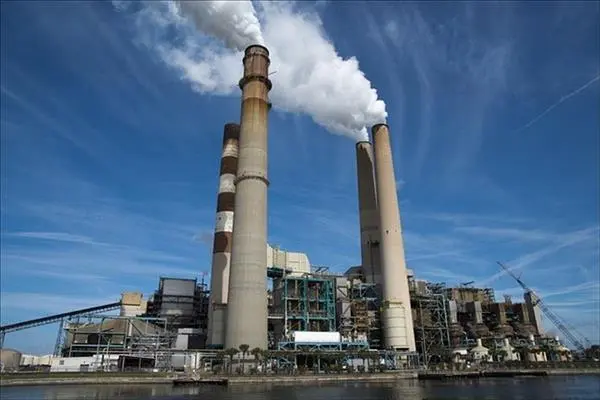US climate envoy John Kerry bet last year that companies would raise billions of dollars to obtain State Department watermark carbon credits.
Kerry described his idea as a game-changing carbon offset market that would help companies meet their climate goals while financing the replacement of fossil-fuel electricity in developing countries with clean energy — perhaps the world’s most daunting climate challenge.
But his claims about the program, called the Energy Transition Accelerator (ETA), depend on companies willing to buy carbon credits that can cost much more than what is currently available on the market at $2 or $3 a ton.
Companies can use carbon credits to claim they are meeting reduction targets even though emissions continue – whether they come from Kerry or not, said Luke Pritchard, director of nature-based solutions at We Mean Business.
Proposed $50 per ton
It’s unclear how much credits would cost under Kerry’s program, but Michael Wara, director of Stanford University’s Climate and Energy Program, suggested that the ideal price for carbon, under any program, would be around $50 a ton. That’s more than 10 times what the average would be. Weighted global price in 2021.
“I think offsets can be done well at relatively high prices,” Wara said. “The challenge is always that the entities that buy offsets are not willing to pay the prices required to do the offsets well.”
The ETA is still being designed, but Kerry said it would only support additional renewable energy, retiring coal-fired power in developing countries.
It also takes a jurisdictional approach, which means it will support national or regional plans for green energy grids in general, not individual projects whose climate benefits could be undermined by fossil fuel development in the same area.
Dirt cheap
Kerry targeted the energy systems of developing nations because they have the potential to make or break global climate targets in the next decade, but they are also an area with unique challenges in terms of carbon credits.
The aim of carbon credits is to stimulate activities that lead to lower emissions – which would not have happened without the financing provided by the credits.
It’s “extremely difficult, diabolical” – to quantify renewable energy and retire coal, said Zeke Hausfather, a climate scientist at Stripe, a financial infrastructure platform. “Solar is cheap,” he said. “There’s a lot of incentive to build solar, a lot of reasons why Making people not build solar power, and use coal is not economic, it is political.”
This is why carbon credits are exiting the renewable energy sector.
Vera, the world’s largest carbon credit logger, said it stopped certifying renewable energy production in 2019 with a few exceptions, and has not certified the retirement of coal plants.
Launch of the Kerry program at the cop28 summit in Dubai
Kerry’s program – which is expected to be formally launched at the UN climate talks in November cop28 – is making its debut At a time when voluntary carbon markets are in the midst of a kind of identity crisis, the old methods of project credit have come under intense scrutiny to load markets with quality projects. lousy.
The program will not become a cheap alternative to reducing corporate emissions
Now there is an evolution in thinking about how credits are used.
At previous conferences since Sharm el-Sheikh, Kerry has suggested that companies might stockpile these credits as a way to achieve their voluntary net-zero targets in the short term — though he also insisted that the program would not become a cheap alternative to cutting their emissions.
The Science-Based Target Initiative’s Net-Zero standard, which has become the benchmark for corporate climate quality commitments, does not allow companies to purchase emissions avoidance credits outside their value chain to offset their ongoing emissions.
“Certainly under the current rules with SBTI, you can’t use ETA credits to achieve your goals,” said Pritchard of the We Mean Business Alliance. All of this begs the question, will there be enough corporate interest in these credits to make good on Kerry’s promises?
The State Department has not said how much support they expect for ETA, but Kerry sold it at the Sharm el-Sheikh summit as a way to offset government climate funding constraints.
Fact crowd more than 100 billion dollars
The Bezos Earth Fund and the Rockefeller Foundation, who join Kerry’s team in backing the program, have promoted an analysis by Climate Advisers, which suggested more than $100 billion could be mobilized through 2030.
It is based on the optimistic assumption that “many companies participate and that these companies are given significant freedom to receive credits for emissions reductions funded via an ETA.” The report also includes a more modest scenario, in which less corporate participation could garner $4 billion to $8 billion through 2030. .
Niam McCarthy, climate risk manager at Climate Advisers and one of the authors of the report, emphasized that the program could attract companies in “hard-to-mitigate sectors, companies with temporary carbon neutrality targets, companies with net-zero voluntary commitments,” and companies in compliance markets.
703 companies in the world have adopted net zero targets
This description includes a large number of companies in the United States and abroad, for example, more than a third of all publicly traded companies globally, or 703 companies, have adopted zero net targets.
The Kerry-proposed program may entice some of these companies to participate through their affiliation with the State Department. This can give investors confidence that the credits will not be invalid












